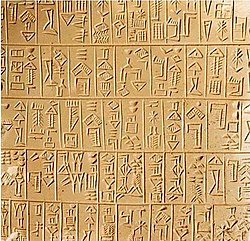Bundar: Bolí
DrustírástíA language is a system of symbols, generally known as lexemes, and the rules by which they are manipulated. The word language is also used to refer to the whole phenomenon of language, i.e., the common properties of languages. Though language is commonly used for communication, it is not synonymous with it. The scientific study of language, its historical development, characteristics, and use in society is known as Linguistics. Human language is a natural phenomenon, and language learning is instinctive in childhood. In their natural form, human languages use patterns of sound or gesture for the symbols in order to communicate with others through the senses. Though there are thousands of human languages, they all share a number of properties from which there are no known deviations. Humans have also invented (or arguably in some cases discovered) many other languages, including constructed human languages such as Esperanto or Klingon, programming languages such as Python or Ruby, and various mathematical formalisms. These languages are not restricted to the properties shared by natural human languages. Cáindárí
Gicená foŧúBolízántIn phonetics, a vowel is a sound in spoken language that is characterized by an open configuration of the vocal tract where there is no build-up of air pressure above the glottis. This contrasts with consonants, which are characterized by a constriction or closure at one or more points along the vocal tract. The additional requirement is that vowels function as syllabic units: it is this criterion that distinguishes vowels from semivowels (and approximants, which in some languages may be slightly more constricted). Baŕáhí itting xuáisa?
Niviştánk ákBaloc ná bolík: Balocí, Bráhuí, Siráikí, Khetrání, Lásí Drávaŕí bolík: Támil, Maláyálam, Telugú, Kánađ, pen... Amsáya bolík: Sindí, Paşto, Panjápí, Urdú Eşíá ná bolík: Arabí, Bangálí, Cíní, Jápání, Abrání (Hebrew), Indí (Hindi), Koríáí, Mangolíáí, Fársí, Sanskrit, Tibbatí, Táí, Turkí, Vetnámí pen... Yúrap ná bolík: Básk, Cek, Angrezí (English), Fránsí, Jarman, Itálví, Nárvejí, Purtugálí, Romání, Rúsí, Slovek, Ispení, pen... Joŕ karoká bolík: Esperanto, Ido, Volapük, pen... Joŕ karoká (Constructed) bolí, Kríol (Creole), Gum maroká (Extinct) bolí, Laeja (Dialect), Miyánustumání (International) bolí, Rájí (National) bolí, Pidgin, Nişán (Sign) bolí Báşágal ák: Arabí báşágal, Saerillik (Cyrillic) báşágal, Abrání (Hebrew) báşágal, Látíní (Latin) báşágal, pen... Elo likvaŕ ák: Abjad, Abugida, Braille, Hieroglyphics, Logogram, Syllabary, SignWriting pen.. Pen ubbo: Bolí, Bolí ná táríx, Bolízánt, Bolízántkár, Báşágal ná táríx, script Xáot ákElo bundar ák |









